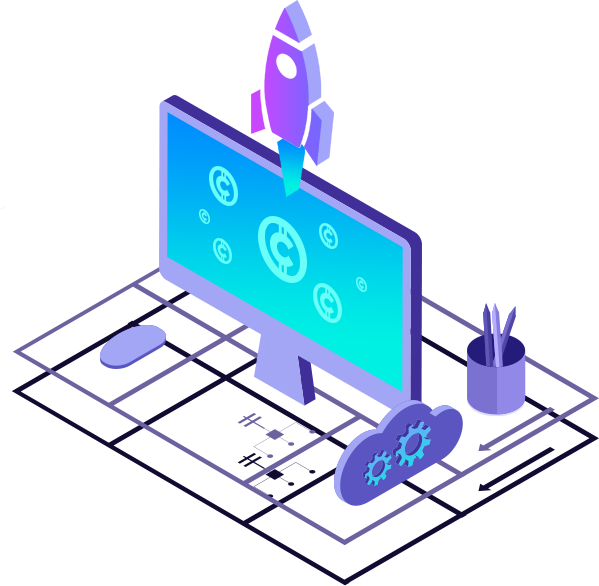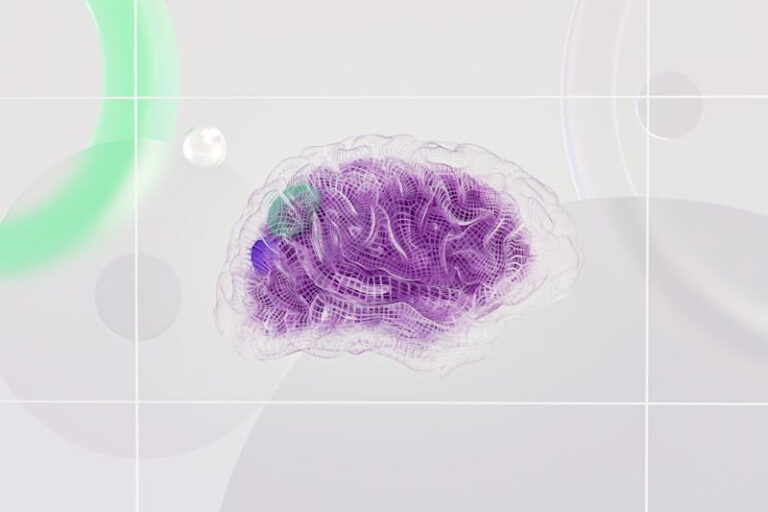The internet has transformed the way we engage, work, and live. From Web1, which introduced simple static pages, to Web2, characterized by interaction and social networking, each stage of the internet has altered our existence. Now, we find ourselves on the cusp of the next phase — Web3 and blockchain, a network characterized by decentralization, ownership, and transparency, driven by blockchain innovation.
At Asapp Studio, a premier software development firm celebrated for our innovative applications and software solutions, we take pride in supporting businesses in adopting this groundbreaking technology. Our proficiency in app development and state-of-the-art tools has consistently made us the preferred partner for enterprises eager to excel in the digital landscape.
In this article, we’ll delve into the definitions of Web3 and blockchain, their influence on various sectors, and why they signify the future of technology.
The Progression of the Internet: From Web1 to Web3
To comprehend Web3 and blockchain, it’s vital to reflect on the evolution of the internet:
Web1 (The Static Web)
The inaugural version of the internet, Web1, concentrated on information exchange. Websites were fixed, and users could only consume content passively. Interaction was scarce, with an emphasis on delivering information.
Web2 (The Interactive Web)
With the rise of social media channels, dynamic websites, and cloud technology, Web2 ushered in interactivity. Users could create and disseminate content but found control predominantly with centralized entities like Facebook, Google, and Amazon. Even while Web2 democratized the internet, it gave rise to issues such as data privacy risks and monopolistic tendencies.
Web3 (The Decentralized Web)
Web3 redefines the internet by redistributing control. Established on blockchain technology, Web3 emphasizes user sovereignty, empowering individuals to possess their data and digital assets. It eliminates intermediaries, nurtures transparency, and cultivates a trustless environment where users interact directly.
Web3 and blockchain are not merely technical enhancements — they represent a philosophical transition toward democratization, privacy, and equity in the digital realm.
What is Blockchain?
At the heart of Web3 and blockchain lies blockchain technology, a decentralized ledger that records transactions across a network of computers. Unlike conventional systems, where a central authority holds power, blockchain functions in a distributed fashion.
Here’s how blockchain operates:
- Decentralization: Transactions are documented across multiple nodes (computers) within the network, ensuring that no single entity holds authority.
- Transparency: All transactions are visible on a public ledger, facilitating the verification and tracking of activities.
- Immutability: Once a transaction is recorded, it remains unchanged, thus preserving data integrity.
- Security: Blockchain employs cryptographic techniques to safeguard data, rendering it resistant to hacking and fraud.
- Automation: Blockchain supports smart contracts, which are self-executing programs that automate actions based on defined conditions.
The Promise of Web3
Web3 and blockchain envision a future where individuals gain enhanced control over their online identities, data, and assets. Here are the core advantages of Web3:
1. Data Ownership
In Web3, users possess and govern their data. Rather than depending on centralized platforms that profit from personal information, individuals can determine how their data is utilized and even profit from it themselves.
2. Privacy and Security
Web3 harnesses blockchain’s cryptographic principles to bolster privacy and security. Users can engage online without revealing unnecessary personal information, thereby decreasing the risk of data breaches.
3. Decentralized Finance (DeFi)
A major influence of Web3 lies within the financial landscape. DeFi platforms allow users to lend, borrow, and trade independent of traditional banks, furnishing financial services to the unbanked and underbanked.
4. Empowering Creators
Web3 presents novel avenues for creators to monetize their work through NFTs (Non-Fungible Tokens) and decentralized platforms. Artists, musicians, and writers can earn directly from their audience without intermediaries taking a significant cut.
5. Transparency and Trust
Blockchain’s transparency cultivates trust in scenarios where accountability is critical, such as supply chains, electoral systems, and financial transactions.
6. Inclusion
Web3 dismantles barriers to access, fostering a more inclusive digital economy where anyone with internet access can engage.
Real-World Implementations of Web3 and Blockchain
Web3 and blockchain are already steering innovation across various sectors. Here’s a closer examination of their applications:
1. Finance
Decentralized finance (DeFi) platforms like Uniswap, Aave, and Compound empower users to trade, lend, and borrow amongst themselves, bypassing conventional financial institutions. These platforms are open, accessible, and often more cost-effective than traditional banking systems.
2. Healthcare
In healthcare, blockchain guarantees the secure storage and sharing of patient records. It enhances privacy, minimizes administrative inefficiencies, and fosters trust in data management.
3. Supply Chain Management
Blockchain heightens transparency in supply chains, allowing businesses and consumers to authenticate the origins and legitimacy of products. Companies like Walmart and IBM are leveraging blockchain to trace goods from farm to shelf.
4. Gaming and NFTs
The Web3 era is transforming the gaming landscape by implementing play-to-earn frameworks, allowing gamers to gain real-world value from virtual assets. Moreover, NFTs empower players to acquire, trade, and exchange distinctive digital collectibles.
5. Voting Mechanisms
Blockchain-enabled voting mechanisms promote clarity and security, minimizing the likelihood of fraud and bolstering voter trust. Nations like Estonia have already tested blockchain’s potential in electoral processes.
6. Real Estate
Blockchain streamlines real estate dealings by removing middlemen, lowering expenses, and accelerating transactions. Smart contracts facilitate activities such as property transfers and rental agreements.
7. Content Production
Platforms such as Audius and Mirror enable creators and authors to engage directly with their audiences. By utilizing Web3 and blockchain, these platforms guarantee that creators maintain ownership and receive fair compensation for their creations.
Challenges of Web3 Adoption
Although Web3 and blockchain offer vast potential, several hurdles must be overcome for widespread acceptance:
- Scalability: Existing blockchain systems, like Ethereum, face challenges in managing high transaction volumes. Solutions such as layer-2 scaling and Ethereum 2.0 are addressing these issues.
- Regulatory Ambiguity: Governments globally are in the process of establishing regulations for blockchain and cryptocurrencies. This lack of clarity can discourage enterprises and individuals from embracing Web3 technologies.
- User Engagement: Web3 tools often necessitate that users grasp new concepts such as wallets, private keys, and decentralized applications (dApps). Intuitive user experiences are key for broader adoption.
- Energy Efficiency: Certain blockchain platforms, like Bitcoin, have substantial energy consumption. However, newer networks are implementing energy-conscious mechanisms like Proof of Stake.
- Interoperability: For Web3’s success, various blockchain networks must operate in harmony. Initiatives like Polkadot and Cosmos are making strides to address this challenge.
How Asapp Studio is Fuelling the Web3 Revolution
At Asapp Studio, we are dedicated to assisting businesses in adopting Web3 and blockchain solutions. As a leader in app development and blockchain innovation, we offer:
- Custom Blockchain Solutions: Tailored applications for diverse business needs.
- Decentralized Application (dApp) Development: Intuitive dApps that harness Web3’s power.
- Smart Contracts: Secure, self-executing contracts that automate processes.
- Web3 Integration: Assistance in integrating blockchain into existing systems or developing new platforms from scratch.
- Consulting and Advisory: Strategic guidance to navigate the complexities of Web3.
The Future of Web3 and Blockchain
The future of Web3 and blockchain is limitless. From decentralized autonomous organizations (DAOs) to token-based economies, these technologies will redefine industries.
At Asapp Studio, we are excited to be part of this revolution, empowering businesses to leverage Web3 and blockchain for innovation and growth.
Conclusion
Web3 and blockchain transcend technological progress, marking a core transformation in the digital realm. By emphasizing decentralization, transparency, and user empowerment, they are paving the way for a fairer and safer internet.
At Asapp Studio, we proudly lead this movement, ensuring businesses can confidently navigate the intricacies of Web3. Whether you’re an emerging startup or an established enterprise, Asapp Studio is your trusted partner in crafting the future.







